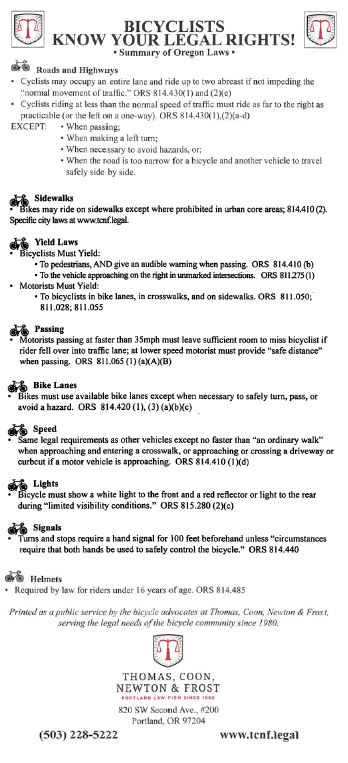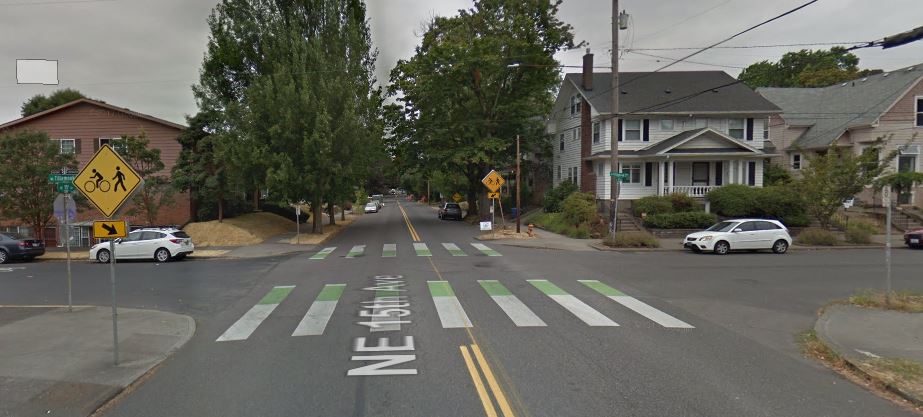BIKETOWN, Portland’s bike sharing system, is a great resource for getting more people on bikes. The system’s efforts to encourage more riding include educating users about how to ride properly and without violating Oregon law. However, some of BIKETOWN’s advice incorrectly describes Oregon law and has the potential to mislead bicyclists who are learning the ropes.
SIDEWALKS
Printed on each BIKETOWN bike is a list of riding tips, which includes “WALK BIKES ON SIDEWALK”:

The BIKETOWN website contains a section entitled Rules of the Road, which advises bicyclists “AVOID SIDEWALKS” and “. . . whenever possible, it’s best to ride on the road and leave the sidewalk for pedestrian traffic.”

In fact, Oregon law generally allows bicyclists to ride on the sidewalk, provided they comply with the requirements of ORS 814.410, including obligations to yield to pedestrians, audibly warn before passing, and enter crosswalks at a walking speed. Many local jurisdictions impose prohibitions on riding in downtown core areas, including Portland, where bicyclists generally may not ride on the sidewalk between Naito Parkway, 13th Avenue, SW Jefferson and NW Hoyt. Portland City Code 16.70.320. Although BIKETOWN’s warnings about sidewalk riding may apply in Portland’s downtown core, that area constitutes a small fraction of the system’s service area, which includes many high speed thoroughfares without bike lanes, such as NE Sandy, SE Powell and NE Martin Luther King. In those places, a bicyclist may feel safer riding on the sidewalk than in the roadway, and they would be legally entitled to do so.
HEADPHONES
The Rules of the Road section of the BIKETOWN website also states: “It is also illegal to ride with two headphones in; one is permitted, but it’s always safer to ride without any.”

This is a clear misstatement of Oregon law. Without wading into the prudence of riding with headphones, no section of the Oregon vehicle code explicitly prohibits such use (in one ear or both). California law does include such a prohibition, which likely caused the confusion here, but given that BIKETOWN exclusively operates in Oregon, this is an incorrect statement of the law.
We think it is important to clearly state which parts of BIKETOWN’s advice is based on Oregon law, and which parts are put forth as safe riding “tips.”
In the meantime, check out TCNF’s pocket sized cards that summarize Oregon bike law, which can be found here and at local bike shops.



